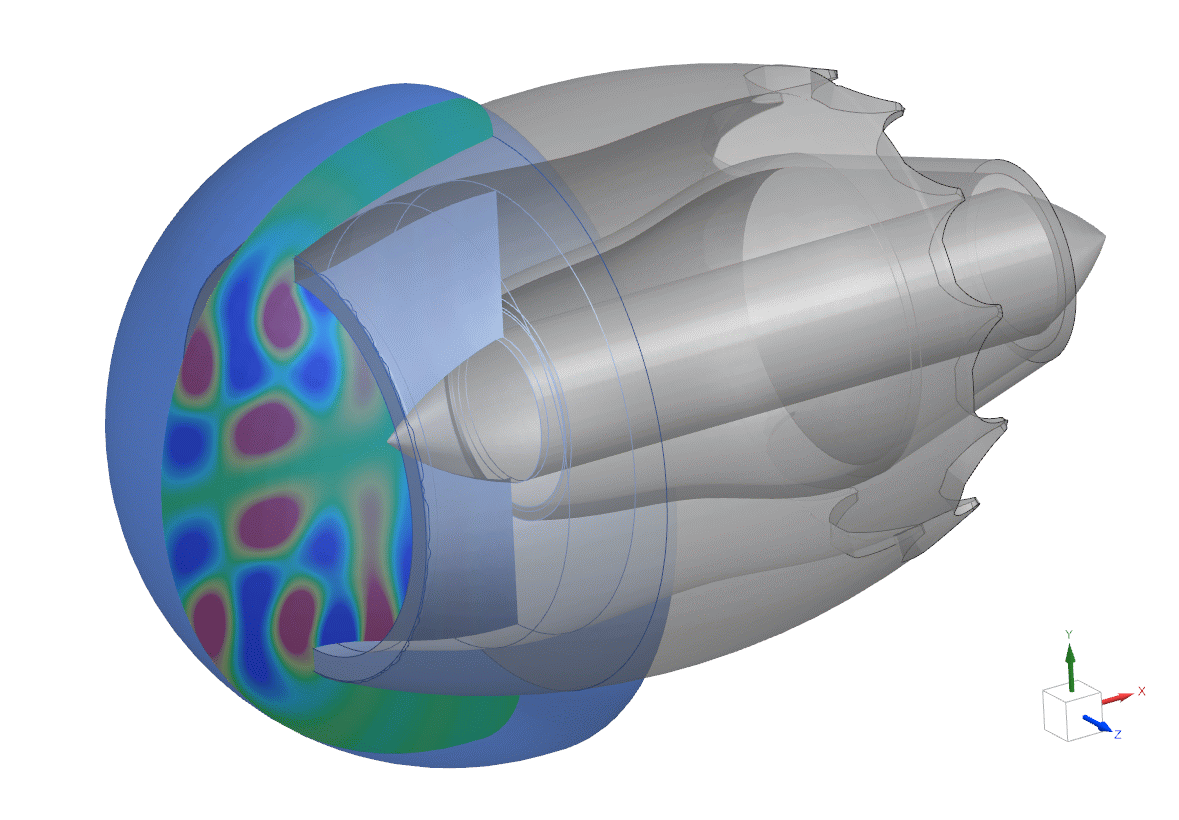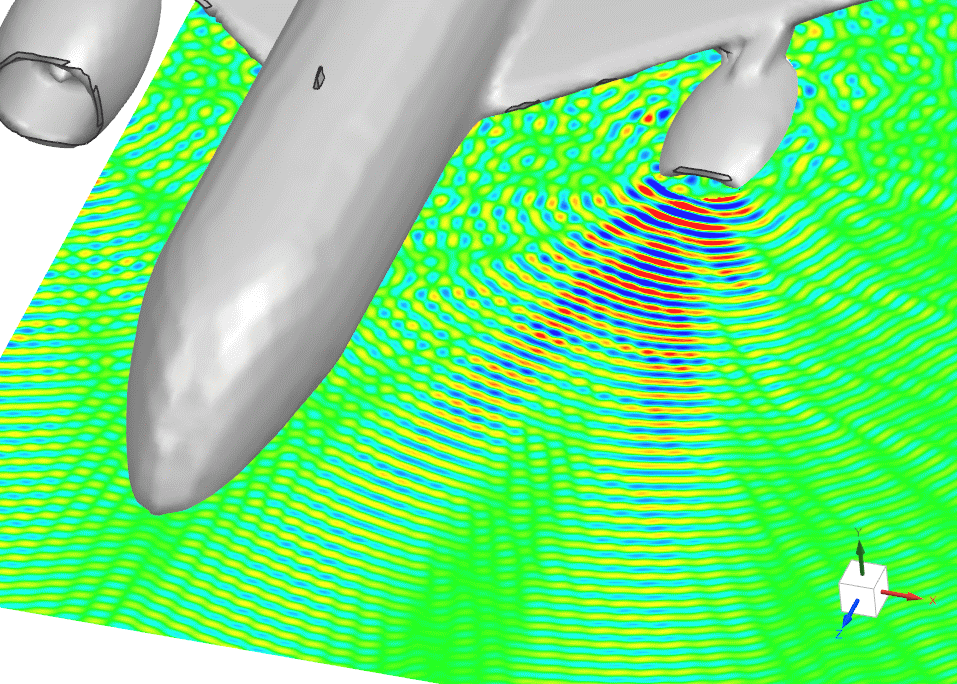Discover how acoustics simulation with Simcenter 3D enables your team to model noise source generation and propagation in realistic urban environments
 Acoustics is a concern for aerospace applications ranging from drones and aircraft engines to launch vehicles and the payloads they carry, with the potential to affect the safety and performance of these devices as well as their environmental impact. To address these concerns, engineers can leverage flow and acoustics simulation in Simcenter 3D in addition to test data to minimize risk by better predicting and understanding the acoustic performance of their products.
Acoustics is a concern for aerospace applications ranging from drones and aircraft engines to launch vehicles and the payloads they carry, with the potential to affect the safety and performance of these devices as well as their environmental impact. To address these concerns, engineers can leverage flow and acoustics simulation in Simcenter 3D in addition to test data to minimize risk by better predicting and understanding the acoustic performance of their products.
This webinar will focus on applications where exterior noise is a key factor, which are typically complicated by the need to account for so-called installation effects and urban propagation with reflective surfaces. At the design stage, even before physical prototypes have been produced, simulation can be helpful for working with multiphysics problems such as flow-induced-noise or vibroacoustic coupling effects. In such flow-induced-noise problems, the simulation of acoustic propagation can be fed with loads coming from a flow simulation or those based on test data and/or semiempirical models.
Similarly, direct field acoustic noise testing is becoming more popular for launch vehicle and payload qualification. This testing method accounts for the speaker characteristics and controls plus the interaction of the test specimen vibrations and the generated sound fields. Here, pretest simulation with Simcenter 3D can greatly help in derisking the testing and ensuring efficient test execution and quality results.
Separating the different parts of the acoustics problem with Simcenter 3D, including the source generation, near-field propagation, and urban propagation, can also accelerate the end-to-end simulation time and allow engineers to reuse existing simulation components without rerunning the complete simulation.
 This live webinar will describe the use of Simcenter 3D Acoustics for three typical applications and highlight how these models can help accelerate the design processes using three examples from the aerospace industry:
This live webinar will describe the use of Simcenter 3D Acoustics for three typical applications and highlight how these models can help accelerate the design processes using three examples from the aerospace industry:
- Drone noise validation and urban propagation
- Aeroengine intake noise validation
- Acoustic characterization of launch vehicle liftoff environment